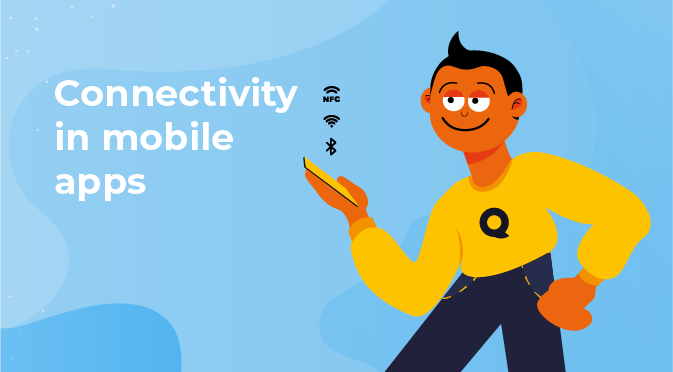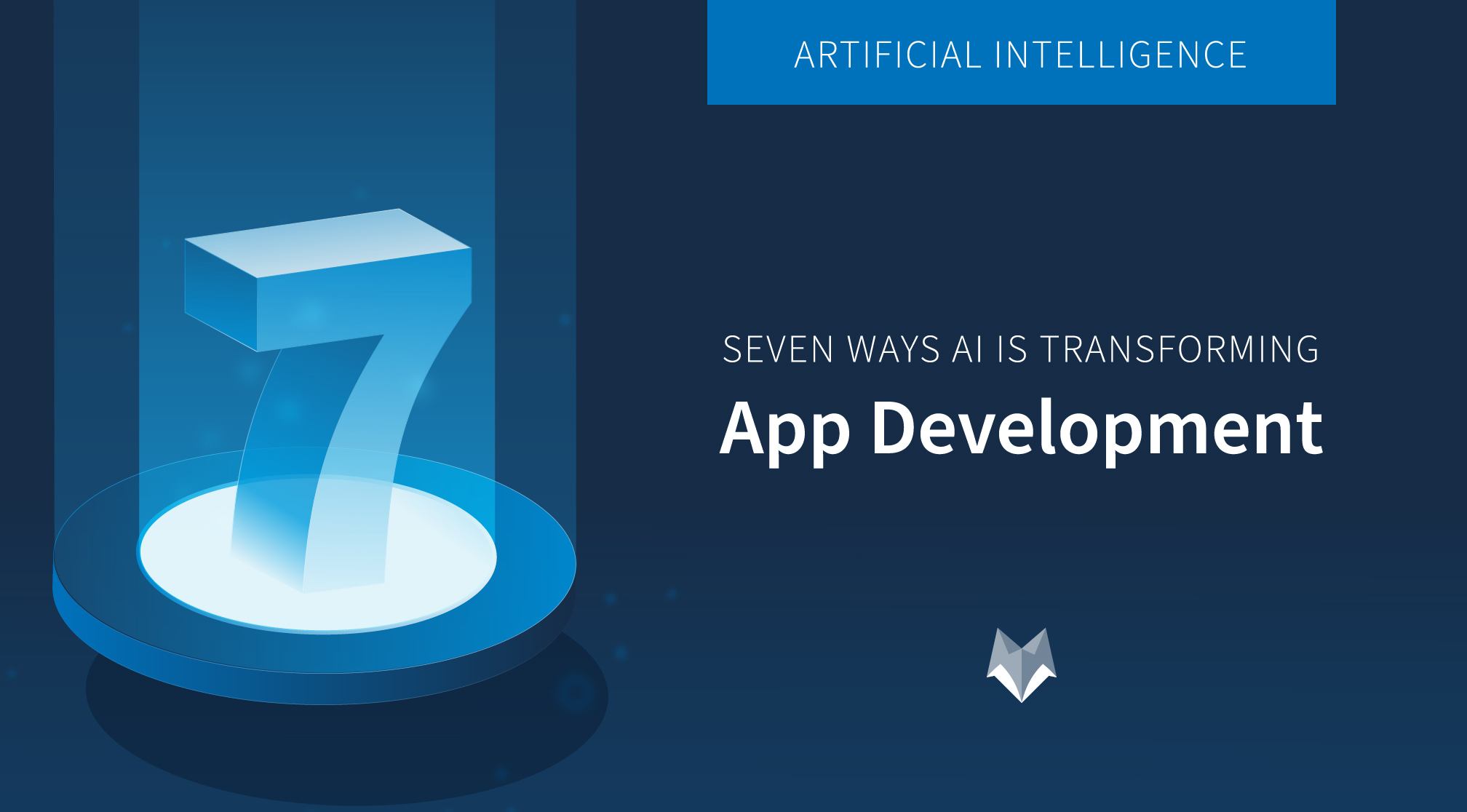Connectivity in mobile apps
December 11th, 2020

This guest-post is courtesy of our partners at EMBIQ.
Today nobody can imagine life without smartphones. They connect us with our friends and family, and provide entertainment and access to social media. That is why mobile phones have become an integral part of everyday life.
Modern technology allows us to design unlimited applications and systems which facilitate every aspect of our lives, both professional and private. Living in such a technologically developing world, it is worth knowing which connectivity methods in app development are the most popular today.
The impact of smartphones and mobile apps on our lives
We live in very interesting times, because what 30-40 years ago was just science fiction is now becoming a reality. When the first mobile phones were launched on the market, no one expected that a quarter of a century would be enough for these devices to give us almost unlimited possibilities. Today, mobile applications facilitate both our professional and private lives. Just consider how many applications you use each day. Social Media, banking, company and remote access applications – thanks to smartphones and mobile app, we are able to improve every aspect of our lives. In the last 20 years the technologies used in communication between devices have changed drastically. IrDA used to be a common technology that allowed data transfer between devices, but it was replaced by Bluetooth – so effectively that hardly anyone remembers about data transfer via IrDA.
Technologies that are used most often today
• Bluetooth Low Energy (BLE) – this technology allows to wirelessly connect devices and transfer data between them. BLE is used by many different applications that allow to connect devices and exchange data. What's more, thanks to BLE, you can pair wireless headphones, smartwatches and other devices with your smartphone.
• NFC – NFC technology is widely available today and we can find it in many devices we use daily. It evolved from RFID and allows e.g. to pair headphones by touching them with a smartphone, and to make contactless payments. NFC technology is so universal that it is used in an increasing number of applications today.
• RFID – everyone who works in places that require access control is familiar with plastic access cards. You just have to hold the card close to the reader and the door is opened. RFID technology is currently used in mobile development because it allows to design applications and systems in many different industries.
• Wi-Fi – every modern device, such as a smartphone or laptop, has a Wi-Fi antenna, because this technology allows for wireless connectivity. Wireless LAN connects devices to the Internet, however, the technology is also very useful in mobile apps.
• Ultra WideBand (UWB) – An innovative wireless connectivity technology. It is characterised by high data transfer speed – up to 2 Gb/s at distances of up to 10 meters. The great potential of UWB allows to assume that it is this technology that will replace cable connections between devices at home or in the office.
How connectivity is used in footfall analytics
Today connectivity gives us an infinite number of possibilities. Our smartphones can connect through applications using Wi-Fi, NFC, or GPS, which is now widely used in specific industries. Applications for the transport industry analyze the data obtained by individual users' smartphones, which allows to collect very interesting and valuable data. What's more, connectivity can also be used in a Smart City, e.g. through NFC technology. When building the technological architecture of a Smart City, NFC is used to identify individual devices. Connectivity allows for the continuous development of mobile systems and apps, which is why an increasing number of companies or enterprises are interested in creating apps tailored to their activities. The growing interest in modern technologies leading to company applications slowly becoming a standard. Thanks to this, modern technologies now surround us both at work and at home.
Let’s take another example. Bluetooth Footfall Analytics is a technology based on beacons. Smartphone apps can receive beacon signals and interpret them, expanding the user’s context. This is a wireless, low-power, short-distance set of protocols used primarily to connect devices directly to each other in order to transfer data. Bluetooth can only communicate with devices that are nearby (approximately 33 feet or 10 meters). Bluetooth signals have been proposed as a method of contact tracing by identifying a phone’s proximity to other devices with a relatively high level of accuracy, using a specialized app.
But to use any of the functionality of your device you need to build software and close it in a functional mobile app. It is very important to connect the functionality and expectations of the client. But with relevant knowledge, creating a mobile app for IoT devices is simple. Experienced team of the developer can create a multifunctional app. This is why it is worth planning your marketing strategy such as App Store Optimization.
Why is it so important to create apps for specific operating systems?
Only two systems count on the smartphone operating systems market: iOS and Android. Such a monopoly of the app market means that new applications are created with one of two operating systems in mind - the App Store or the Google Play store. iOS applications are much more demanding than Android apps, which is why developers often have to use MFi Program when developing apps that are to run on iPhones. MFi Developer License allows the app to be compatible with Apple devices, which is why the best developers, such as EMBIQ, know that when designing an iOS app, you should use MFi software.
What solutions await us in the future?
The rapid development of technology allows to assume that smartphones will play an even greater role in the cyber infrastructure surrounding us. Thanks to concepts such as the Internet of Things, an increasing number of everyday objects will be connected to each other, which gives us unlimited possibilities.
About the author
EMBIQ is a software development company with a wide range of competencies in this matter. Our specialists are dedicated to mobile apps development. We also project and construct hardware dedicated to the needs of IoT (Smart City, Smart Metering, Smart Industry, Smart Agriculture) Telemedicine and AI concepts, which has been confirmed by completing over 300 projects for customers from all over the world since 2009.
Similar Articles

Posted on March 18th, 2021
The future of technology is AI and the future of AI is mobile. The latest data shows that the market size of artificial intelligence was valued at $27.23 billion in 2019, this figure is projected to reach $266.92 billion by 2027 (Fortune Business Insights, 2020).

Posted on February 24th, 2021
This guest-post is courtesy of our partners at Input Logic.

Posted on November 19th, 2020
Mobile technology and the accessibility of smartphones and other mobile devices allowed for the convenience of instant access to live streaming and video content that could be viewed from a screen in the palm of your hand.




